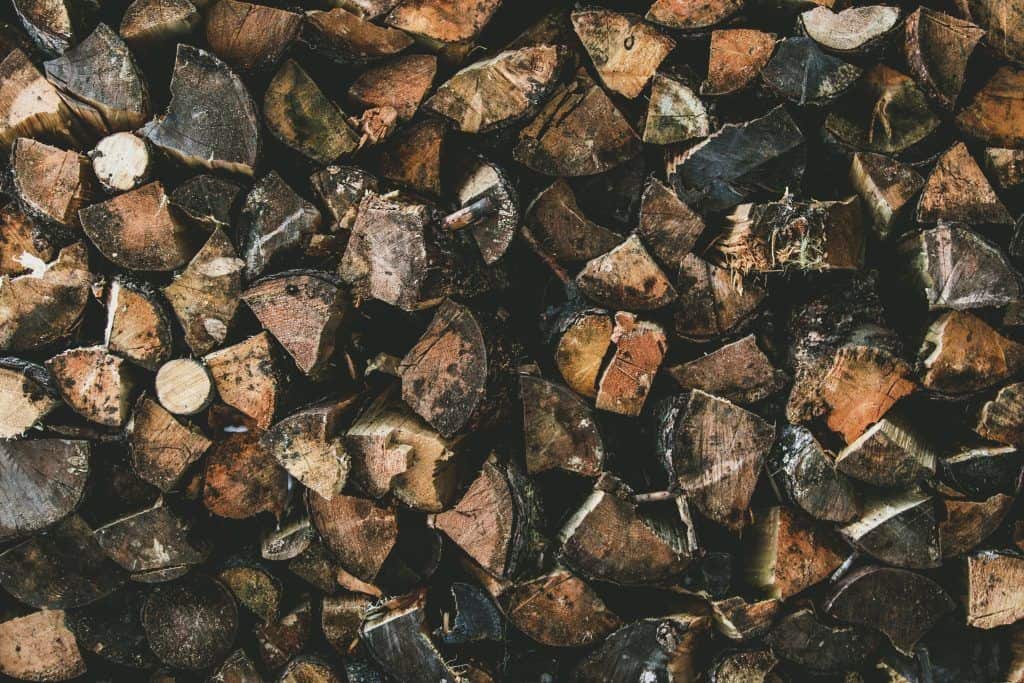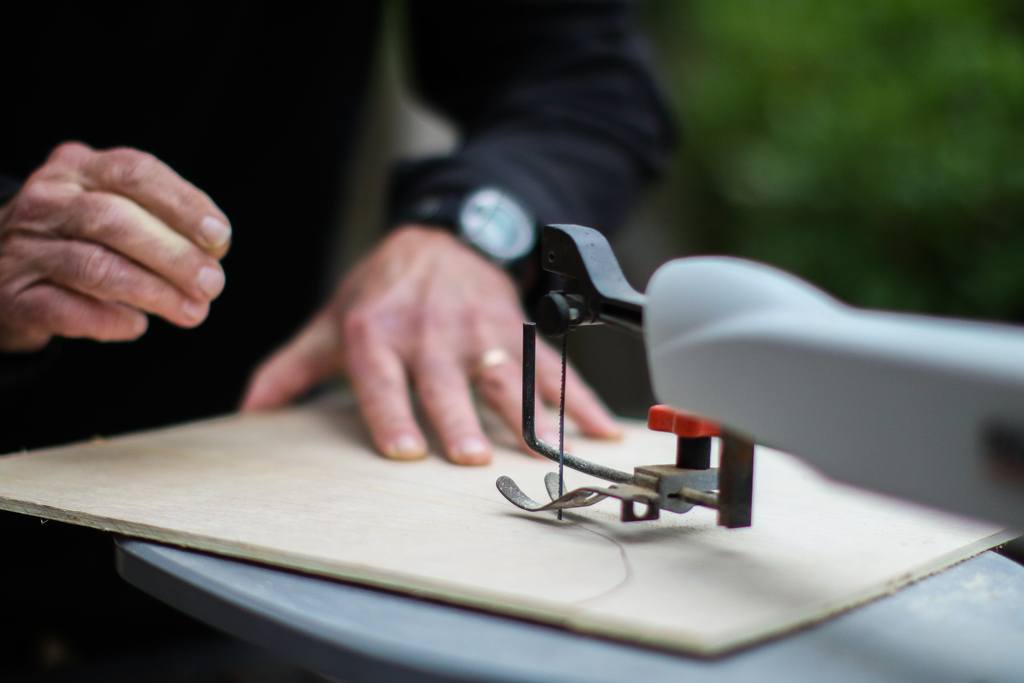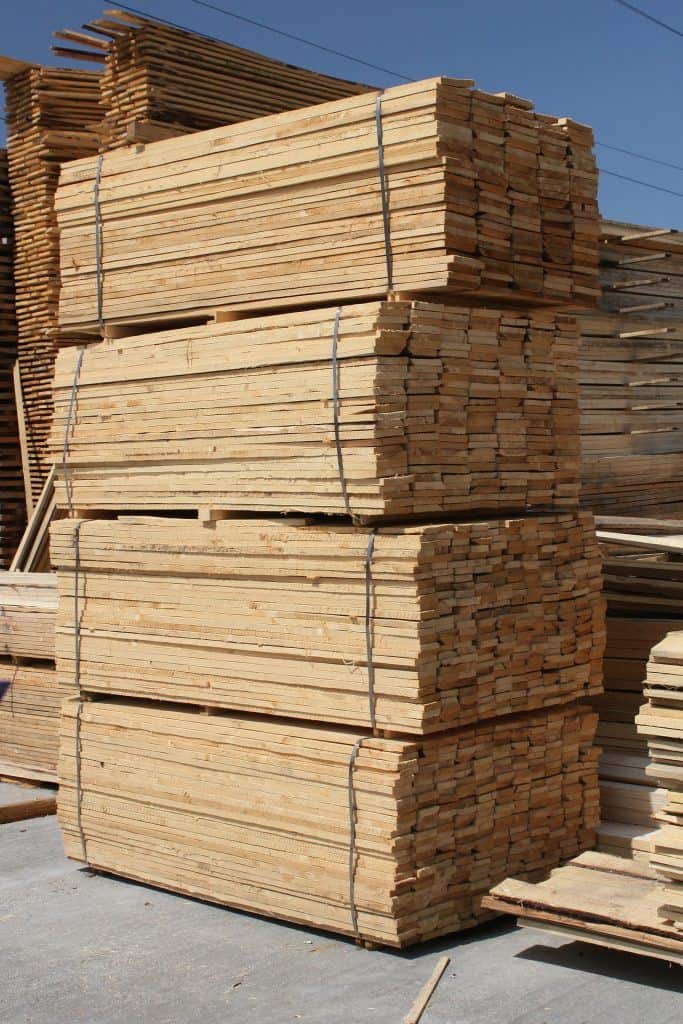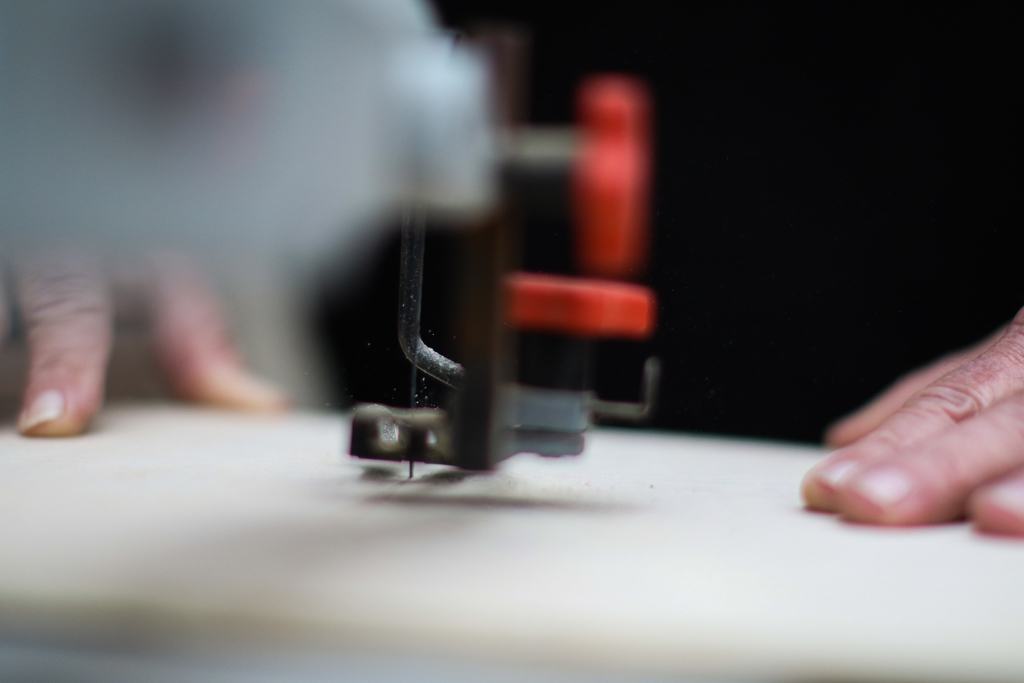From the simplistic elegance of dovetail joints to the most intricate of intarsia, the scroll saw enables you to create the cleanest, most precise cuts on your wood. Choosing the best wood for your scroll saw projects can save you undue frustration and the needless loss of both time and materials.
I walk through the most common woods to use for your scroll project, including cherry, walnut, maple, birch, ash, hickory, and oak. I’ll highlight why to chose each, and what you should avoid, depending on the specifics of your project.
Contents
Best Wood for Scroll Saw Projects
In the category of hard woods, I’ve ranked my selections in order from softest to hardest. While this might sound like an oxymoron, you should know and understand the characteristics of each of the woods that are available to you.
1. Cherry
Cherry trees consist mostly of heartwood, which is a light reddish-brown. Its minimal amount of sapwood is a light reddish-yellow hue. Cherry wood possesses an even grain that is easy to cut, and holds up well even to intricate fretwork.
One of the softer hardwoods, cherry can be much more forgiving on your scroll saw blades than others but provides less strength for weight-bearing items. Cherry is loved by a lot of woodworkers for its beautiful and rich coloring.
You can stain cherry wood to change its final coloring if you prefer. Cherry wood darkens a bit over time, especially as it is exposed to sunlight. Cherry also can warp as it dries, moreso than other hard woods.
2. Walnut
Black walnut heartwood varies from a rich brown color to a purplish hue. Its sapwood is to be virtually white, and has a straight, even grain. Walnut trees commonly produce burls with exotic, swirling grain patterns.
Walnut trees are North American, and basically the only dark hardwood tree on the continent. When you think of walnut, you should think of the high contrast that the heartwood vs sapwood creates.
Walnut is only slightly harder than cherry wood. It’s not quite as strong as maple or birch, and is better used for pieces that don’t require much weight, just like cherry.
For your consideration, I recommend evaluating cherry vs walnut as almost identical in hardness, and you should select which wood based on your preferred coloring. Cherry is preferred for a warm, rich, wood color, great for Christmas-y, holiday decor projects whereas walnut is preferred for a higher contrast look.

3. Maple
Maple is one of the most common hardwoods in North America, and is typically much lighter in color than cherry or walnut. Maple is readily available, easy to find, and relatively cheap in comparison to many other hardwoods, making it a very common wood of choice for scroll work.
Maple sapwood typically has a clean, white appearance with an even grain. Maple wood is commonly found with a curly or fiddle back patterned grain, which some consider difficult to finish.
In general, there are two very distinct and different types of maple wood: soft maple and hard maple. The differences are pretty self-explanatory… soft maple is a softer wood, and is much cheaper than hard maple.
Soft maple is easier to cut, and won’t dull your scroll saw blade nearly as quickly as hard maple. However, some projects require a really dense wood, and hard maple would be much better for that than soft maple.
4. Birch
Likely the most common variety of birch available is the North American yellow birch. The birch tree contains very little sapwood. Its heartwood possesses a creamy-white color with a curly grain.
Birch is very similar to maple in terms of its hardness, workability, and even color sometimes. Also like maple, the curly end grain has a tendency to absorb stain irregularly. Many maple trees have similar, lighter coloring, and is often confused for birch wood.
Birch is very common in the Scandanavian region of the world. One common area you might recognize birch wood from is that it is a common wood of choice for cabinets.

5. Ash
Ash is an extremely strong, lightweight hardwood. With a hardness comparable to birch and oak, ash is known to be a bit unforgiving on scroll saw blades.
Ashwood possesses a very unique grain pattern which can appear too busy for pieces with a lot of intricate details. Make sure you want a lot of grain patterns that stand out if you select ash.
Its heartwood tends to have darker brown sections, and lighter outlying sapwood. This creates a higher contrast look, similar to that of maple.
6. Hickory
Hickory is both plentiful and cheap, and has one of the best strength-to-weight ratios of any available wood. Hickory is the strongest of all the hardwoods on my list. This makes it a difficult wood to cut, and it is known to wear out saw blades.
Hickory has a sapwood that tends to be rather pale, while its heartwood tends to be a much darker brown or reddish-brown. Hickory looks beautiful under almost any lighting situation, and stains very well.
One of my favorite aspects of hickory is how inexpensive it is, when compared to other woods on my list. It is rather shocking to find it so economical to work with, given how hard the wood is.
Both the sapwood and heartwood tend to be straight-grained with unique patterns that can add to the aesthetic of your finished piece. This straight, consistent grain make it a great option when you are creating large scroll projects, as you really see the grain patterns emerge.
Bonus – What About Oak?
Oak is a very common wood in America, and is commonly used for scroll projects. However, even though it is considered a hard wood, I don’t recommend it for use with your scroll saw.
You would think that oak would work well for scroll work, as it is a harder wood. However, oak has a very porous grain, which makes it fragile and brittle when making tight cuts. Even when cutting relatively straight, oak is prone to breaking once in awhile, ruining a project.
Oak is much less likely to warp than other woods in its class. So, it might be worth trying out. Aside from its occasional brittleness, oak is a beautiful wood that takes stain and finish nicely. Just be warned!
When to Use Soft Woods for Scroll Work
In most cases, soft woods are not the best wood for scroll saw projects.
The wood’s inherent softness makes them too brittle for use in most fragile fretwork. Softwoods such as pine and basswood suffer from being too brittle for use in finer work, as well as being rather difficult to stain or finish.
Where soft woods can be good to use is if you are practicing with the scroll saw. Because they yield to the blade with very little resistance, softwoods such as poplar and alder can be great practice for those new to using a scroll saw.
Remember, the whole point of using the best scroll saw is that you need to make tight, intricate cuts. Your choice of wood is really important, because some woods just don’t allow for tight turns and cuts.
Generally speaking, a softer wood might break when you are cutting tighter turns.
When you are learning how to cut shapes in wood, scrap soft wood is perfect. It is much easier to cut, generally very cheap, and you won’t dull your blade in the process. Beyond that, though, look to use a harder wood.
When to Use Hard Woods for Scroll Work
A scroll saw is the perfect tool to use to make sharp, precise cuts. And, your wood needs to be strong enough to hold up to these cuts.
Harder woods typically make a better type of wood to use for scroll work. The reason is because scroll work typically involves tight, curved designs.
As mentioned above, when cutting these tight designs, softer wood tends to break off much easier, ruining your scroll project.
Harder wood, on the other hand, stands up much better to intricate design cuts.

Below, in review of the the best wood for scroll saw projects, most of the woods I list are harder. I just think you’ll get much better (and longer lasting) results from it.
If you’re looking for some ideas on what to do for your next project, I’ve assembled a list of dozens of beginner and advanced scroll saw patterns to use.
Other Scroll Saw Wood Considerations
Wood Thickness
While scroll saws can cut wood up to 2″ thick, the ideal thickness is between 1/4″ – 3/4″. You’ll be making tight turns and intricate curves, and the thicker the wood, the more challenging the cut will be.
If you’re looking to cut wood thicker than 1″, you might be best served to consider a band saw. While a band saw can’t perform nearly the level of intricacy that a scroll saw can, it is designed to cut really thick wood with ease.
This is another reason for selecting a hard wood – you’re patterns and designs require the wood to be thinner for the scroll saw to cut them. Thinner wood cuts last much longer when it is a hardwood rather than a softwood.
Dull Blades
One of the quickest ways to get frustrated using a scroll saw is to operate one with a dull blade. Whether using hard wood or soft wood, cutting with a dull blade will make your scroll saw efforts significantly harder.
Make sure to select the best scroll saw blade for your project and wood, and don’t try to “leg it out” with an old scroll saw blade. You’ll end up paying for it by having a frustrating experience and a less-than-perfect result.

Practice Makes Perfect
Before applying new techniques to your more expensive hardwoods, test out new designs or experimental cuts on the softer, less expensive pieces of wood such as poplar or alder.
Perhaps an even better alternative, for both practice and final pieces, may be the use of generic plywood, such as the kind you typically find at a big-box home improvement store (think Home Depot). Plywood is brittle, but it has some the same cutting characteristics of the harder wood that I’ve recommended.
There are some other downsides to using plywood, even for practice. The glue in plywood dulls your blade much faster, and the edges of the plywood look terrible after intricate scroll saw cuts.
Conclusion
With so many different types of wood available, it’s no wonder that choosing the best one for your project can seem like a daunting task. Just keep in mind the following essential factors when choosing the best wood for scroll saw projects.
The combination of appearance, hardness, and grain structure are important as each relates to the suitability of your project. Don’t be afraid to experiment to find out what does and doesn’t work for your individual projects. You will find that your instincts for wood selection will improve with practice over time.
